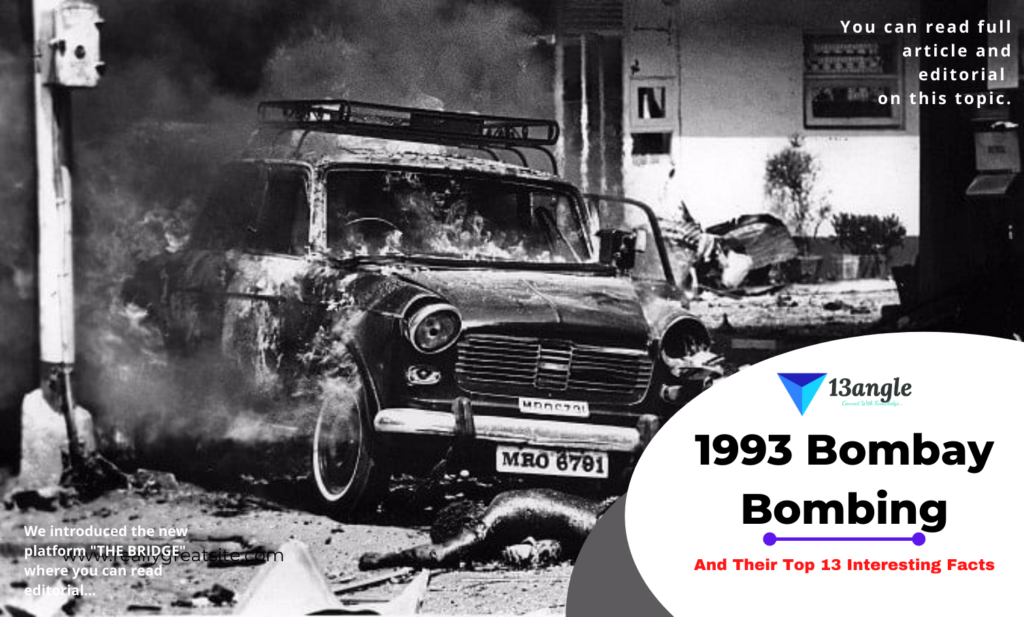- Umang Sagar
- Recent article
1993 Bombay Bombing
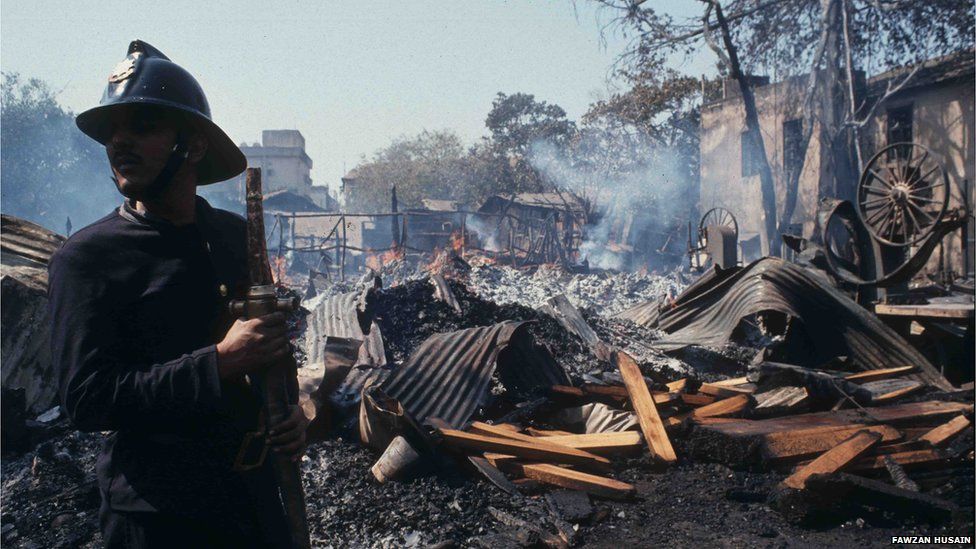
Introduction

- On 12 March 1993, Mumbai, then known as Bombay, suffered a very brutal terrorist attack. It was a series of 13 back-to-back bombs, all taking place in one day. These attacks were carried out by Dawood Ibrahim, leader of the Mumbai-based organized crime syndicate D-Company, with the help of his accomplices Tiger Memon and Yakub Memon. The syndicate seemingly brought about terror in the city as revenge for the communal riots of 1992 and 1993, which took place right after the demolition of the Babri Masjid in Ayodhya.
D-Company

This title had been coined by the media for the Mumbai underworld organized criminal syndicate, which was founded by Dawood Ibrahim. D-Company and their leader Ibrahim was ranked third on the FBI’s “The World’s 10 Most Wanted Fugitives” list, in 2011.
Other well-known fugitives of the organization include Yakub Memon and Tiger Memon, who also played a significant role in the 1993 Bombay bombings.
The company has been linked to the Bollywood Film Industry including real estate and betting businesses, from where they earned most of their income. Many films have been based on this company and its activities. Some movies have been listed below:
– Company (2002)
– D (2005)
– Shootout at Lokhandwala (2007)
– Once Upon a Time in Mumbaai (2010)
– Shootout at Wadala (2013)
– Sooryavanshi (2021)
- There are various crimes D-Company was associated with. Some include the murder of T-Series founder and the music producer Gulshan Kumar in 1997, the 2G spectrum case in 2011, forming relations with Islamic terrorist group al-Qaida and Lakshae-e-Taiba in 2015, associated with Mexican drug organizations in 2018.
Dawood Ibrahim

Dawood Ibrahim was born on 26 December 1955, his father ironically worked as a head police constable. He grew up in a Muslim family in Maharashtra. His son Moin married a girl named Saniya, the daughter of a London-based businessman. His daughter Mahrukh Ibrahim married Junaid Miandad, son of the very famous cricketer Javed Miandad. He allegedly heads the D-Company, is a mafia boss, wanted terrorist, and is charged with murder, extortion, terrorism, drug trafficking, and targeted killing. The United States and India designated him as a global terrorist in 2003.
In 1976, an e-auction took place to sell the property of Ibrahim under the Smugglers and Foreign Exchange Manipulators (Forfeiture of Property) Act (SAFEMA).
Yakub Memon

Yakub Abdul Razzaq Memon was born on 30 July 1962 into a Memon family in Mumbai. Before his life as a terrorist, Yakub was a chartered accountant. He worked in companies like “Mehta and Memon associates”, “AR & Sons”, “Tejrath International”.
He was the brother of one of the prime suspects of the 1993 Bombay bombings, Tiger Memon. He aided Dawood Ibrahim and his brother in handling Tiger’s funds. Including the funding of about 15 young teenagers who were taken to a private location to teach them how to handle heavy weapons and equipment, to accumulate, accumulate arms and ammunition, and acquire vehicles that would be used in the bombings.
Yakub was responsible for many crimes which caused him rigorous imprisonment and ultimately his life. This included possessing explosives with the motive of endangering people (imprisonment for 14 years), illegal possession and transport of weaponry (imprisonment for 14 years), aiding and associating with a terrorist attack (life imprisonment), criminal conspiracy in executing a terrorist attack, and unruly activities including murder (death).
Tiger Memon

- Ibrahim Mushtaq Abdul Razzaq Memon was born on 24 November 1960. He is the brother of Yakub Memon, both of whom are the masterminds behind the Bombay blast in 1993, they acquainted Dawood Ibrahim. He is responsible for several crimes including murder, possession of illegal substances, and smuggling. He is wanted by the Central Bureau of Investigation (CBI) and Interpol. He is one of the significant members of the D-Company, led by Dawood Ibrahim. He got his nickname as Tiger Memon due to aiding a trivial drug and weapon smuggler to elude the crime branch of the Bombay Police by recklessly traveling at over 100km/hr.
The Execution Of The Bombings
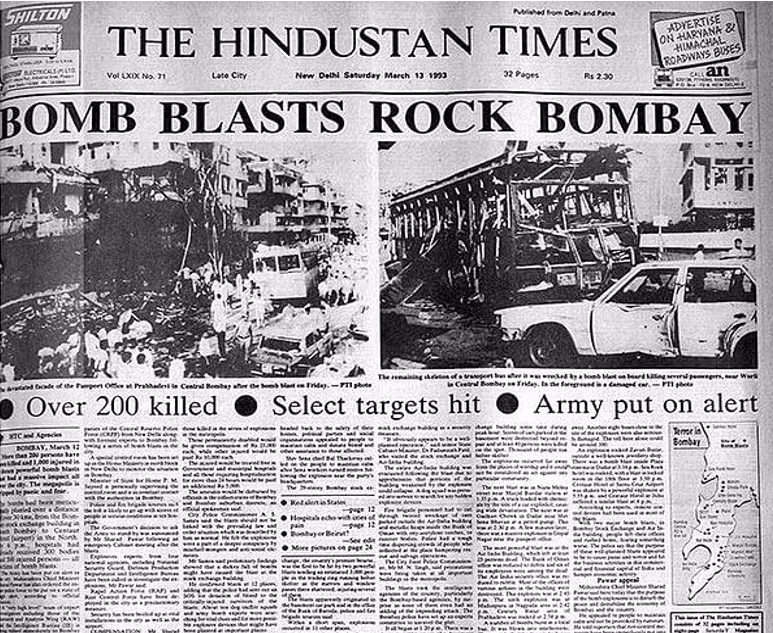
On 12 March 1993, Bombay was shaken by one of the worse terror attacks ever faced by the city. There was a series of 13 explosions in different parts of the city. It led to 257 deaths and 700 people were injured. Some statistics show the death count to be a little over 300 and the number of people injured was approximately 1400. It is currently the most brutal terror attack ever, to take place on Indian soil as per the casualties. Its execution was the most planned in the history of attacks in India; excluding the 26/11 Mumbai attacks. It is also the first terror attack that used RDX as explosive material. Five policemen and customs officials were held responsible for allowing RDX into the city, some by bribes and others due to working carelessly.
At 1:30 PM the first bomb exploded in the basement of the Bombay Stock Exchange building. The building had about 28 stories filled with offices and was surrounded by many structures, all of which were thoroughly damaged. This first attack took the lives of about half a hundred people. For the two hours that followed, car and scooter bombs took off at specific locations at proper time intervals. The places where these bombs took off are listed as follows:
- The Fisherman’s Colony in Mahim Causeway
- Zaveri Bazaar
- Plaza Cinema
- Century Bazaar
- Katha Bazaar
- Hotel Sea Rock
- the Air India Building
- Hotel Juhu Centaur
- Worli and the Passport Office
- Sahar Airport
As mentioned earlier, Dawood Ibrahim with the assistance of Tiger and Yakub Memon has executed this entire bombing. Indian smugglers of the UAE (United Arab Emirates) had financed the bombings. The Pakistani intelligence agency and Inter-Service Intelligence had an active engagement in these blasts as well. Most terrorists who had been recruited for weaponry training were from Dubai or went to Pakistan via Dubai.
The initial plan was to attack the city during the Shiv Jayanti celebrations in April. But they were executed earlier as Gul Noor Muhammad Sheikh, also known as Gullu, was detained by the Nav Pada Police on March 9, 1993. Out of the 19 men who were handpicked by Tiger Memon, who was selected to be sent to Pakistan for arms and ammunition training on February 19, Gullu was one of them. The arrest of Gul Noor Mohammad Sheikh caused Tiger Memon to advance the date of the blasts.
The three five-star hotels were exploded by the terrorists using suitcase bombs in booked rooms. The incident that took up to 90 lives was the explosion of the double-decker bus, which got highly damaged.
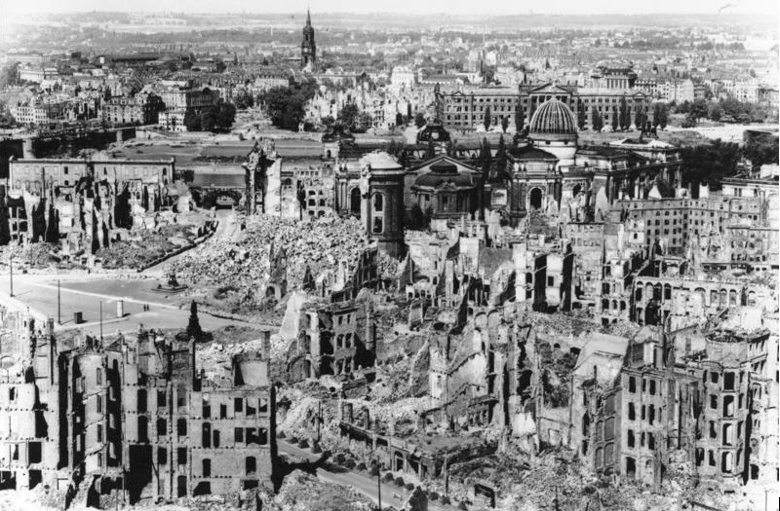
The Explosive Material Rdx

RDX stands for Royal Demolition Explosive, also known as cyclonite or hexogen. The chemical name for RDX is 1,3,5-trinitro- 1,3,5-triazine, it’s white in color, solid in nature, and has no smell or taste which works as an advantage in smuggling. It is highly explosive and is used as an ingredient in certain bombs but can also be used as an individual bomb.
The Explosive Substances Act of India, 1908, extends to all parts of India and applies to all citizens of the country.
Definitions of certain words used in the Act are as follows:
Definition of “explosive substance”. – In this Act the expression “explosive substance” shall be deemed to include any materials for making any explosive substance; also any apparatus, machine, implement or material used, or intended to be used, or adapted for causing, or aiding in causing, any explosion in or with any explosive substance; also any part of any such apparatus, machine or implement.
Punishment for causing an explosion likely to endanger life or property.- Any person who unlawfully and maliciously causes by any explosive substance and explosion of a nature likely to endanger life or to cause serious injury to property shall, whether any injury to person or property has been caused or not, be punished with transportation for life or any shorter term, to which fine may be added, or with imprisonment for a term which may extend to ten years, to which fine may be added.
The Act states that for an attempt to cause an explosion or for making or keeping an explosive with intent to endanger lives or property, they shall face imprisonment for seven years where a fine may be added.
Possession of explosive materials under suspicious circumstances may lead to imprisonment for five years where a fine may be added.
To conclude, RDX is banned in India.
The Aftermath Of The Bombings
A ton of people were arrested and trailed in court related to these 1993 bombings. The court trials went on from 2003 till 2010. In 2006, Justice PD Kode of the designated Terrorist and Disruptive Activities (Prevention) Act (TADA) court arrested 100 out of the 129 accused people, as they were found to be guilty. Many of those who are guilty have avoided custody, for example, Tiger Memon.
Tiger Memon was believed to have owned a restaurant in Mumbai which had close attachments with Dawood Ibrahim, the other prime suspect behind the blasts. Tiger Memon and his family members, including his brother Yakub Memon, fled the country to Pakistan and Dubai to avoid court and custody. Yakub Memom was charged for possession of illegal arms and ammunition. The Memons family excluding Tiger and Yakub Memon flew back to India and got arrested by the Central Bureau of Investigation (CBI), in 1994. Yakub Memon was diagnosed and received treatment for depression after being taken into custody. On 12 September 2006, the TADA court sentenced four members of the Memon family, charged with conspiracy and abetting acts of terror. They face imprisonment from five years to a lifetime depending on the intensity of their crimes. The lawyers asked for leniency in the conviction and delayed the process. On 30 July 2015, Yakub Memon was hanged at 6:30 am IST.
Dawood Ibrahim, also known as the mastermind of the attacks, is the leader of the D-Company. He is associated with major terrorists like Osama Bin Laden, al-Qaeda, and Lakshar-e-Toiba, and was declared a terrorist by Interpol and India in 2003. He is now wanted by Interpol of the United States of America due to his association with the worldwide syndicate of Osama Bin Laden. He has been hiding in the white house of Karachi Pakistan, which was verified by the Pakistani government.
In 2007 prosecutors pled for a death penalty of 44 out of the 100 people found guilty and also the death penalty of those charged with conspiracy. Asghar Yusuf Mukadam and Shahnawaz Qureshi were convicted but they pleaded for leniency. They stated that they were emotionally manipulated into participating in the attack. Mukadam voiced that the conspirators took advantage of his state of mind that followed after the demolition of the Babri Masjid and related riots. They both had aided in the attack by parking the explosive vehicle in Plaza Cinema which on explosion resulted in 10 deaths and 37 injuries. Ultimately, all the conspirators who had managed to escape custody by fleeing the country were convicted and sentenced. These people were called absconders and the trial continued for them in the TADA court of Mumbai. Some of these people are listed below:-
- Abu Salem
- Mustafa Dossa
- Firoz Khan
- Taher Merchant
- Riyaz Siddiqui
- Karimullah Khan
- Abdul Kayoum
- On 16 June 2017, Mustafa Dossa and Firoz Khan were found guilty of conspiracy. Firoz Khan was let go of the hook due to lack of evidence and Musta Dossa died in Mumbai hospital due to cardiac arrest.
The Memons

Yakub Memon was imprisoned in 1994 due to financing and managing the vehicles used in the terrorist attack. He was sentenced to death in July 2007 but ultimately executed by hanging on 30 July 2015 at 6:30 am IST.
Isa and Yusuf Memon were the brothers of Yakub Memon. They were charged for aiding in the attack by providing a shelter for conspiracy meetings and a location to store the weaponry associated with the attack. Isa Memon was sentenced to life imprisonment in October 2006, while Yusuf who suffered from schizophrenia also faced life imprisonment. Yusuf died of cardiac arrest on 26 July 2020. Both of them were held at Harsul Central Jail in Maharashtra.
Rubina Memon was the sister-in-law of Yakub, her Maruti Suzuki car was the first piece of evidence during the trial. She was sentenced to life imprisonment due to providing her car as a transport system for the explosives.
The Bomb Planters

All of the names listed below were charged with death sentences except Imitiaz Ghavate as he was HIV positive, leniency was given to him.
Shoaib Ghansar was the cousin of Asghar Mukadam. He was charged as he put RDX in a scooter in Zaveri Bazaar. His actions caused 17 deaths and 57 injured people.
Abdul Ghani Turk was guilty of loading a jeep with RDX in Century Bazaar killing 113 and injuring 227.
Parvez Shaikh was guilty of planting a bomb in Katha Bazaar killing 4. He also planted another bomb at Hotel Sea Rock that destructed property worth millions.
Mohammed Iqbal Mohammed Yusuf Shaikh and Naseem Barmare were guilty of throwing hand grenades at Sahar airport and planting bombs with RDX material.
Mohammed Farooq Pawale was convicted due to planting an RDX bomb in a car at Air India Building which killed 20 and injured 84 people. He was also guilty of parking an Rdx-laden vehicle around Sena Bhavan which killed 4 and injured 50.
Mushtaq Tarani participated in one of the meetings at Taj Mahal and aided in selecting bombing sites. He planted a bomb at Hotel Juhu Centaur which caused property destruction worth in crores. It also injured 3 people.
Mohammed Moin Qureshi, Feroz Amani Malik, Bashir Khairulla, Zakir Hussain and Abdul Akhtar Khan were accused of throwing hand grenades in Mahim Causeway which killed 3 people and injured 6.
Sanjay Dutt
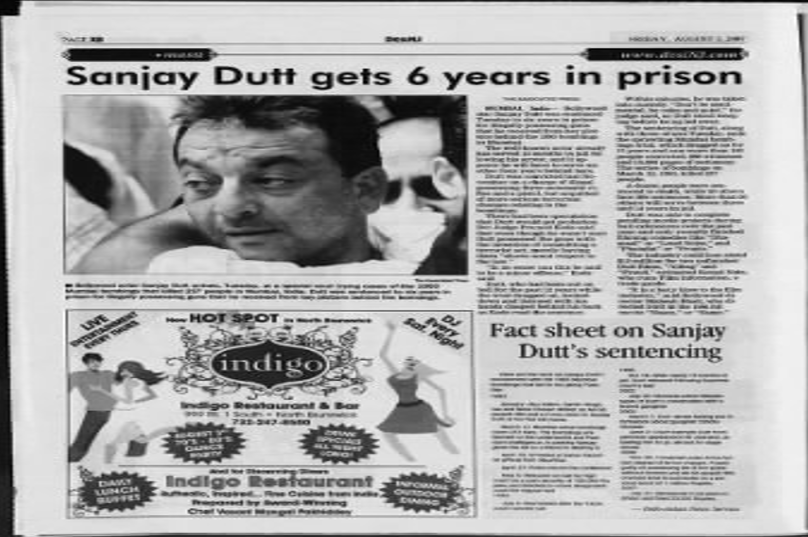
Sanjay Dutt is a famous Bollywood actor who works in the film industry. He has been awarded several awards, such as two Filmfare Awards and three Screen Awards. He acted in about 200 films ranging from genres of romance, comedy, action.
He was found with a gun after the brutal Bombay blasts of 1993. He was convicted under anti-terror law TADA for his involvement and association with the terrorist attacks. He spent 18 months in jail during the trial and was ultimately convicted by the Supreme Court in 2013 where he was sentenced to five years of imprisonment in Pune’s Yerwada Jail.
On April 19, 1993, he was arrested under TADA and Arms act for his association with the attack.
Finally, on February 25, 2016, Sanjay Dutt was released from Jail.
The film Sanju is a biopic based on his life and his story with the 1993 Bombay Blasts.
Zanjeer Dog

On March 12, 1993 Mumbai, the financial capital of India, was hit by a series of seven bomb blasts that killed over 200 people and injured more than 700. It was one of the deadliest attacks in the history of Mumbai. Amidst the chaos and destruction, there was one unlikely hero who emerged to save lives and prevent further damage. This hero was a stray dog named Zanjeer.
Zanjeer, also known as “the bomb detection dog,” was a Labrador Retriever who worked with the Mumbai Police as a sniffer dog. He was trained to detect explosives and had participated in many high-profile cases. Zanjeer retired from service in 1997 after serving the police department for five years.
On the day of the Mumbai bomb blasts, Zanjeer was deployed with his handler, Police Constable Ghule, to the crowded suburban railway station of Matunga. As soon as they arrived, Zanjeer began sniffing around the area, searching for any signs of explosives. Within minutes, he picked up the scent of RDX, a powerful explosive material.
Zanjeer’s discovery of the RDX was crucial in preventing further damage and loss of life. The bomb that contained the explosive material was located and defused by the bomb squad, saving countless lives in the process.
Zanjeer’s heroic actions were widely celebrated in India and around the world. He was awarded a purple medal, which is one of the highest honors for animals in India, and was also honored with a ceremonial retirement from the Mumbai Police Department.
Zanjeer passed away in November 2000 at the age of nine. However, his legacy lives on. He is remembered as a brave and loyal dog who risked his life to save others. Zanjeer’s story is a testament to the courage and dedication of service animals and their handlers who work tirelessly to protect and serve their communities.
Zanjeer’s heroism during the 1993 Mumbai bomb blasts is a reminder of the important role that animals play in law enforcement and public safety. His bravery and devotion to duty have earned him a special place in the hearts of millions of people, and his legacy will continue to inspire future generations.
Top 13 Interesting Facts
Chief Minister of Maharashtra, Sharad Pawar, had intentionally misled people regarding the 1993 Bombay bombings saying that there were “13 and not 12” explosions to show that both Muslim and Hindu communities were affected.
The blasts were to take revenge on the events in Ayodhya and Mumbai.
Mumbai had seen not one but two rounds of violence. The first was just the angry rioting of Muslims on the streets of Mumbai. It was termed as the more “spontaneous” attack. The other round was the horrific blasts in Bombay due to terrorism.
Both Indian cricketers and the film industry would agree to dance with Dawood and other members of the underworld, in their Dubai parties.
In 2015 Abu Salem, a very close associate of Dawood Ibrahim and the underworld was charged with life imprisonment for the murder of a 20-year-old, which was not related to the blasts.
The bombs that were being exploded in hotels were left in suitcases.
As per the news, Abu Salem had also negotiated with Sanjay Dutt, handing him over AK 56 rifles, 250 bullets, and some hand grenades. Two days later, they were also spotted at Dutt’s house taking back the weaponry.
During the investigation of Gul Noor Mohammad Sheikh, he revealed his training in Pakistan and also mentioned the attack in Mumbai, including the decided locations. The policemen decided not to believe him and treated his claims as rubbish.
The headquarters of the right-wing Hindu Shiv Sena party was an expected target as the blasts were revenge for the religious riots of December and January wherein a large number of Muslims were killed.
In 2003, the city had a deja-vu moment as they stood in horror, as two other major icons of Mumbai, The Gateway of India and the jewelry hub of Zaveri Bazar, were bombed.
In 2006, a similar feeling spread across the residents of Mumbai as serial blasts went off in its busy suburban train network. More than 180 people were killed.
Many films were made to shed light on the Bombay Blasts of 1993, including Bombay March 12, Black Friday and
Through all this, Mumbai remained a very strong city. People rushed to hospitals carrying the wounded. Ordinary people donated blood voluntarily, till the point blood banks were full. People head back to work the next morning to the building which remained intact. This is why Mumbai is well known for its spirit.




